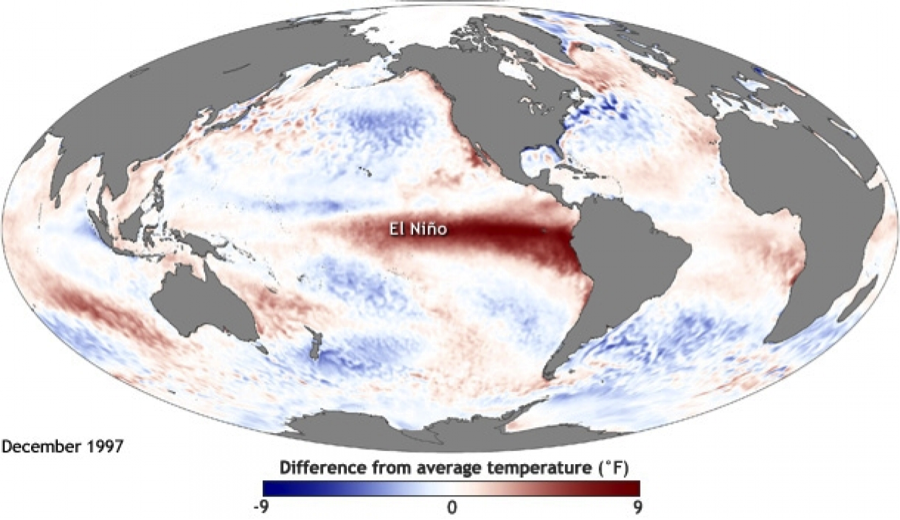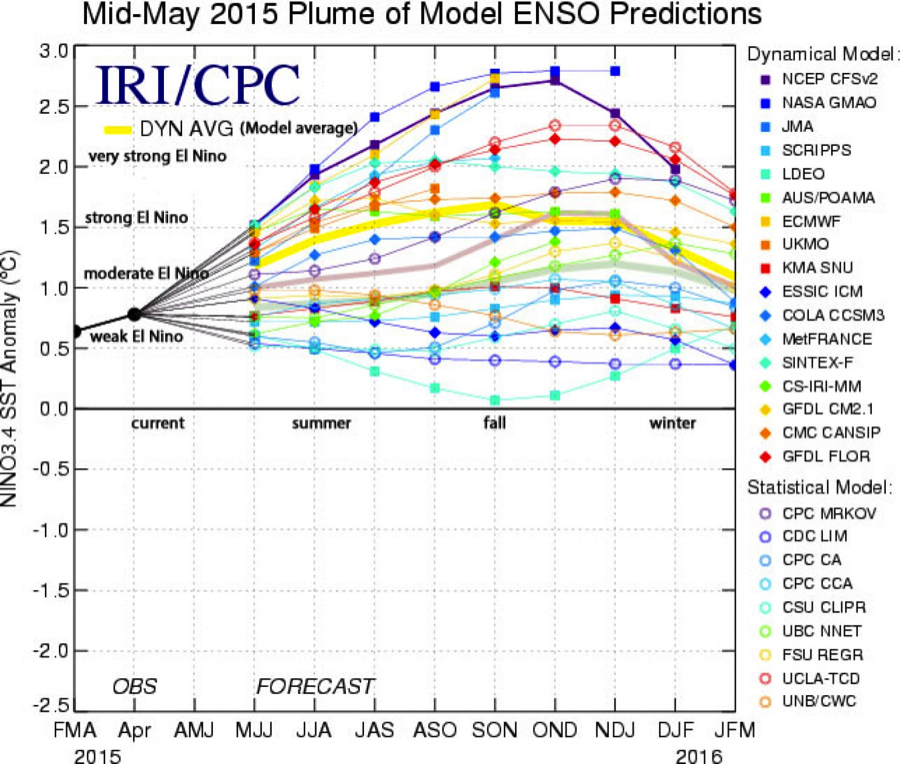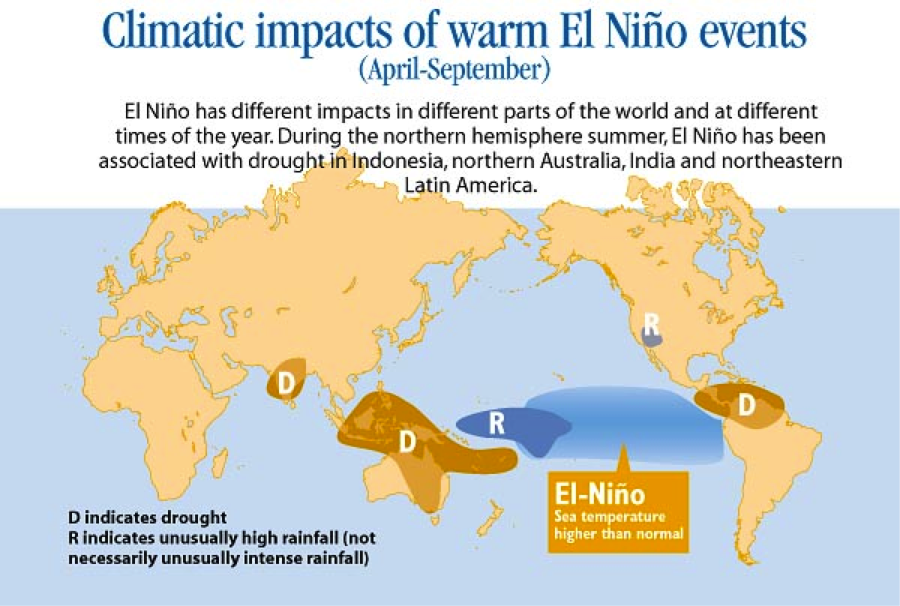Government research centers and universities around the world are predicting that 2015 will bring a strong El Nino event. On NOAA’s ENSO blog, Emily Becker from the National Weather Service Climate Prediction Center, writes, “forecasters currently favor a ‘strong’ event for the fall/early winter”. The UK Met Office has also indicated that their models “suggest that this El Nino could strengthen from September onwards”. Some scientists are even warning that current conditions are reminiscent of the 1997 El Nino – the most severe on record. A report released by the Australian Bureau of Meteorology notes the abnormally warm sea-surface temperature observed in the Pacific Ocean over the last 2 weeks: “It is unusual to have such a broad extent of warmth across the tropical Pacific; this has not been seen since the El Niño event of 1997-98.”

An El Nino event entails warmer than usual sea-surface temperatures in the Pacific Ocean, which in turn impact weather systems around the world — triggering high temperatures, poor monsoons, and drought in Asia and east Africa, while causing heavy rains and floods in South America. Prof. Adam Scaife, of the UK Met Office’s Hadley Centre, said “With the current event, things like the Indian monsoon, tropical West Africa, the maritime continent [Indonesia], and Australian impacts are all appearing in current forecasts – all of those regions are at increased risk of drought.”

El Nino events occur approximately every 2 to 7 years as part of a natural ocean-atmospheric cycle, though some research suggests that extreme El Nino events will become more frequent under climate change. Additionally, this year’s El Nino event could prompt record-breaking global temperatures, as the first four months of 2015 have already been the warmest on record according to the NOAA and NASA.

A strong El Nino will be extremely hazardous for countries whose economies are highly dependent on agriculture, with crop failure and rising food prices creating food insecurity. The arrival of El Nino is most significant in regions where the main cropping season has just begun, such as in South Asia and West Africa; rain-fed rice production in South and Southeast Asia will be affected by the suppressed monsoon rains. In 2009, El Nino caused the worst drought in 40 years in India. In an interview with Reuters, K.K. Singh, the Head of the Agricultural Meteorology Division of the Indian Weather Office noted, “Crops like soybean and cotton are under El Nino watch for being sown mainly in rainfed conditions. El Nino looms large over soybean areas of the central parts and cotton belts of the western and the northern regions.”

A strong El Nino year is likely to disrupt food markets and elevate prices of staple food crops such as rice, coffee, sugar and cocoa. Some reports estimate that an El Nino event can cause tens of billions of dollars of economic damage to the Asia-Pacific region. In a country like Indonesia, where the agriculture, forestry, and fisheries sectors account for 18% of the GDP, historically, El Nino events have caused a percentage drop in the GDP and spiked inflation.